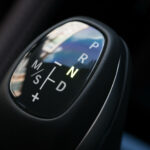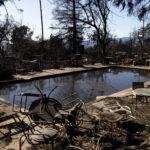
QR codes are a convenient tool for touchless transactions and services, but they may also open the door for hackers. Leakage from 5g wireless networks may impact weather forecasts. Amazon’s new indoor security drone raises privacy concerns.
***
QR code concerns. QR codes have been gaining in popularity for businesses trying to protect employees, customers and suppliers during the pandemic by adopting touchless transactions and services. Unfortunately, they’ve also become targets for hackers.
Combining social engineering with QR codes that can be created in a second, fraudsters are using them to open and drain victims’ bank accounts, install malware, penetrate entire corporate networks and more.
A recent MobileIron study on QR codes found that 71 percent of consumers cannot distinguish between a legitimate and malicious QR code, and nearly 17 percent have had a QR code misdirect their mobile device to a suspicious site. QR codes can also be used to automatically add a contact listing to your phone; reveal your location; initiate a phone call; create a text message or email; place a meeting on your calendar; set your social media to follow certain accounts; facilitate payments; and add a preferred WiFi network without your knowledge.
Source: “The Cybersecurity Threat No One Talks About Is A Simple Code,” Forbes, Sept. 20, 2020; “QR Codes: Consumer Sentiment Survey,” MobileIron
5G leakage could impact forecasts. 5G wireless networks will provide faster connection times and increase the number of devices that can connect to a network, but they may also lead to inaccurate weather forecasts, according to a new study from Rutgers University.
The study used computer modeling to examine the impact of 5G “leakage”—i.e., unintended radiation from a transmitter into an adjacent frequency band or channel. Researchers found that the signals from the 5G frequency bands potentially could leak into the band used by weather sensors on satellites that measure the amount of water vapor in the atmosphere and affect weather forecasting and predictions.
Source: “5G Wireless May Lead to Inaccurate Weather Forecasts,” Rutgers University-New Brunswick, Sept. 24, 2020
***
Flying security camera. Ring, the Amazon-owned home security business, has introduced an indoor autonomous drone that has raised some privacy concerns.
The $250 drone, called Ring Always Home Cam, has a high-definition camera and can automatically fly on preset paths to specific spots in your home, streaming video to your smartphone of what it sees along the way. Users can set up paths for the drone via a smartphone app, or if the drone detects motion, it can fly on its own to that spot and take video of what’s going on.
The camera will only record when the drone is flying and is blocked when it is sitting in the dock. Ring noted the drone is meant to be noisy while in flight, making it obvious when it’s in use, and that it cannot be manually controlled.
Source: “Amazon’s Ring will sell a $250 security drone that flies around your home,” CNN, Sept. 24, 2020




















 States Push Changes to Driver, Auto Insurance Requirements in 2025
States Push Changes to Driver, Auto Insurance Requirements in 2025  Update: LA Wildfire Insurance-Loss Estimates Approach $40 Billion
Update: LA Wildfire Insurance-Loss Estimates Approach $40 Billion  An Increase in Identity Theft, Cybercrime Predicted in 2025
An Increase in Identity Theft, Cybercrime Predicted in 2025  Palisades Fire Litigation: Suit Alleges LA Utility Mismanaged Water Supply
Palisades Fire Litigation: Suit Alleges LA Utility Mismanaged Water Supply 

